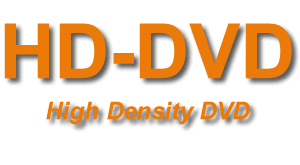BD Vs AOD
3. Page 3
HD-DVD (AOD) Vs Blu-Ray (BD) - Page 3
 Although the DVD Forum seems to be currently backing HD-DVD, the format with
the largest number of backers is Blu-ray Disc, with 12 companies sitting in
on the format committee. Blu-Ray was initially targeted at recording of high-definition
video. However, the latest addition of Hewlett-Packard and Dell to the format
steering committee is expected to result in a widening of its target market
to include the computing space. Of course pricing makes such products unreachable
for the mid-user.
Although the DVD Forum seems to be currently backing HD-DVD, the format with
the largest number of backers is Blu-ray Disc, with 12 companies sitting in
on the format committee. Blu-Ray was initially targeted at recording of high-definition
video. However, the latest addition of Hewlett-Packard and Dell to the format
steering committee is expected to result in a widening of its target market
to include the computing space. Of course pricing makes such products unreachable
for the mid-user.
Plasmon has also launched its own format called UDO (Ultra Density Optical), which is also targeted at the data archiving and storage market as a replacement for MO (Magneto Optical) discs. UDO uses 405nm blue-violet laser and phase change technology adapted from the Blu-Ray DVD-type products. UDO drives operate with an 8KB sector size with direct overwrite capability.
Besides the “violet laser” solutions, the industry has also received proposals based on red lasers. Warner Bros has proposed the HD DVD-9 compression method, applied on regular red laser DVDs. This will allow for the format to launch faster because current facilities can be used and the change in the current way DVD players work are minimal. It supports development of backward compatible players that can playback current and next generation DVD.
The weak part of the HD-DVD-9 format is that it can only store 4,7GB on a single layer DVD. HD content has more than twice the resolution of normal DVD and therefore also fills much more in raw data. However, it is questionable whether the compression technology used will meet the increased requirements for HDTV.
The Chinese answer for HDTV applications is called EVD (Enhanced Versatile Disc). As with the case of HD-DVD-9, EVD is based on the current red-laser technology. EVD uses a new, high-level compression system called VP6, developed by New York-based On2 Technologies, to squeeze 120 minutes of HD movie footage onto a single disc.
While all formats are physically incompatible, they all bring about a large jump in data storage because of the same blue laser technology. On the other hand, it ‘s very possible that there is going to be a major fight between the two groups supporting the AOD and BD technologies. This cannot be avoided, because the financial rewards that the winner will obtain will be immense. Unfortunately, the end-user, as usual, will be the immediate loser, at least for the first couple of years.













